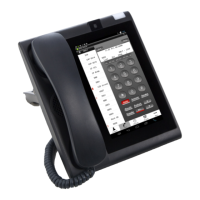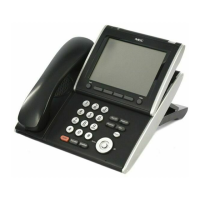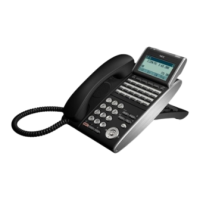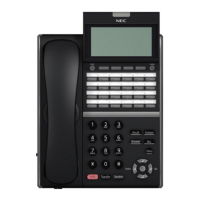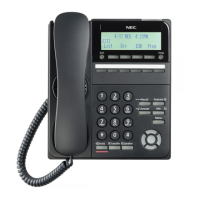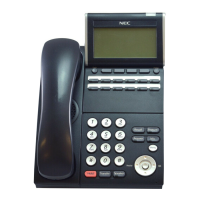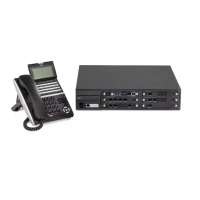Desktop Messaging / Email Integration
UX Mail Manual Chapter 2: Features ◆ 111
2
Programming
Step 1 Set up the basic Desktop Messaging options for the Subscriber Mailbox.
1.1 CUSTOMIZE: MAILBOX OPTIONS EDIT: SUBSCRIBER: [EMAIL] EMAIL INTEGRATION (PAGE 441).
- Select Ye s to enable Desktop Messaging for the mailbox.
- If this option is not available, the maximum number of licenses has been exceeded.
✔ By default, this option is disabled (No).
1.2 CUSTOMIZE: MAILBOX OPTIONS EDIT: SUBSCRIBER: [EMAIL] EMAIL INTEGRATION SYNC MODE (PAGE 441).
-
Select
All Folders
to have Desktop Messaging synchronize with all public subscribed folders.
- Select Inbox Only to have Desktop Messaging synchronize only with the public inbox.
- Select VM Folder Only to have Desktop Messaging synchronize with the public Voice
Messages Folder. (Do not use this option with Outlook Express.)
- Turn to
DESKTOP MESSAGING APPLICATIONS (PAGE 445) for more on setting up the Email Integra-
tion Sync Mode option.
✔ By default, this option is All Folders (all public folders are synchronized).
1.3 CUSTOMIZE: MAILBOX OPTIONS EDIT: SUBSCRIBER: [EMAIL] EMAIL NAME (PAGE 441).
- Enter the email account name. For example, enter yourname for the email account your-
name@emailserver.com.
- You can optionally enter your entire email address (e.g., yourname@emailserver.com) and
skip the
[Email] DOMAIN NAME entry.
✔ By default, there is no entry for this option.
1.4 CUSTOMIZE: MAILBOX OPTIONS EDIT: SUBSCRIBER: [GENERAL] NAME (PAGE 419).
- Enter a name for every Subscriber Mailbox. Desktop Messaging uses the subscriber’s name
to identify the message sender in the recipients email inbox. See the following tables for
more on how a subscriber’s mailbox name interacts with their email name.
✔ By default, there are no names entered.
The programming below is required to enable Desktop Messaging for a Subscriber Mailbox.
• For Exchange Server accounts, ask the server administrator for the account setup information.
• In Outlook Express, make sure the following Tools: Options: options are enabled:
- Empty messages from the ‘Deleted Items’ folder on exit
- Purge deleted messages when leaving IMAP folders
• For non-Exchange accounts, consult the documentation provided by the email provider.
• For IMAP4 synchronization to occur, the subscriber’s email account must be set up to leave (save) messages
on the email provider’s server.
Messages Left by Internal Extensions
Mailbox Name Email name Inbox From Field Email From Field
No No Unknown Caller Unknown Caller [Unknown Caller@local domain]
Yes No Mailbox Name Mailbox Name [local email name]
No Yes Email Name Email Name
Yes Yes Mailbox Name Email Name
Messages Left by Outside Callers
Caller ID Inbox From Field Email From Field
No Outside Caller Outside Caller [OutsideCaller@local domain]
Yes Outside Caller Outside Caller [OutsideCaller@local domain]

